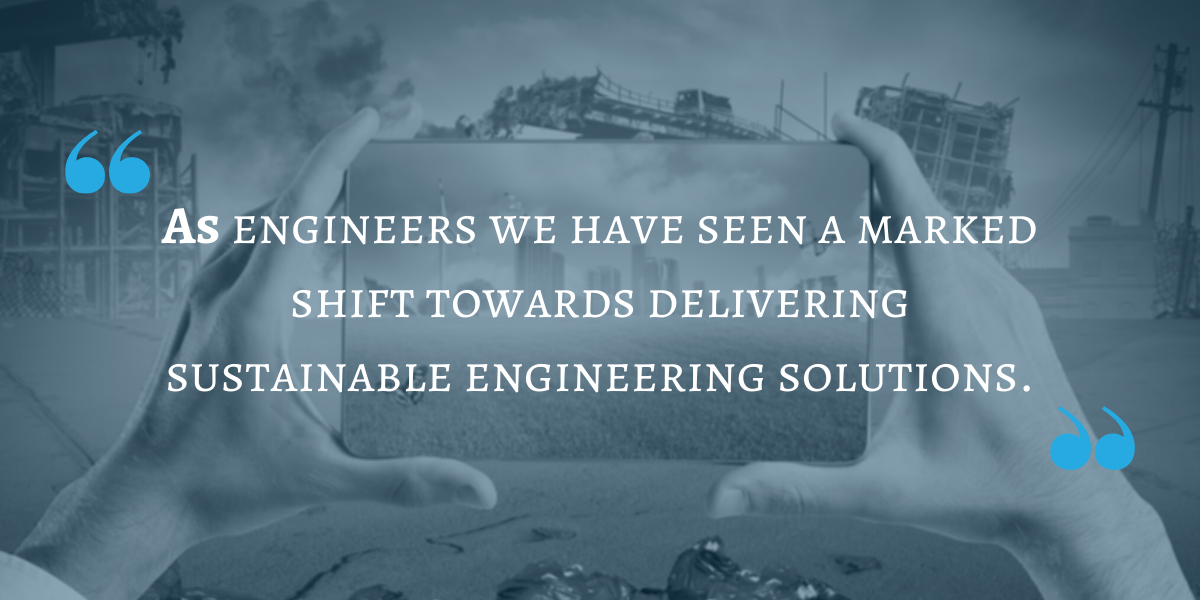
Sustainable development is driven by the three pillars of sustainability: social, environmental, and economic. As engineers we have seen a marked shift towards delivering sustainable engineering solutions, not just on account of the current world climate crisis, but also for moral, legislative, and financial reasons. Delivering sustainable development requires innovative design, lower impact construction methods, and new technologies.
A combination of these methods must be employed to ensure that no one pillar of sustainability overpowers the other, allowing for a bearable, equitable and viable solutions.

Social
Due to the large scale of civil engineering projects, the impact upon local communities and stakeholders can have a sometimes-adverse effect and can disrupt the way of life for many. It is therefore critically important to engage with communities and stakeholders early and often, communicating not simply the needs of the client but also what the envisaged outcome of the project shall be, and wider benefits may accrue to the locality. For example, installation of a new water pipeline will improve and secure the water supply of the community, ensuring safe and clean water is available, and future development capacity.
Environment
Although Civil Engineering may deliver some of the world’s greatest social and environmental triumphs, such as clean water, construction by its nature can have a high carbon footprint, with the production of materials such as steel and concrete, and the use of large energy consuming plant and equipment. To counter this, greater emphasis has been placed upon reduction, reuse, and recycling of construction materials and the application of innovative thinking in how this can be achieved. This can take the form of recycled concrete for fill, reuse of excavated materials for pipe bedding, or trenchless installation methods for the avoidance of adverse impact upon the environment, and a reduction in overall material usage.
Economic
Delivering on the social and environmental pillars has value from a societal and positive climate change aspect, but there may also be short and long-term financial value. Using the local supply chains and engaging with SME’s has also had an equitable cross-benefit for all parties involved, and in the post-Covid world this supply model will benefit local economies hard hit by closures. Also, as outlined above the reduction, reuse and recycling of construction materials can lead to savings across engineering projects for all parties involved. In the long term, delivering development in full cognisance of the potential social and environmental impacts, both positive and negative, will lead to greater economic savings in the form of societal advancement and recovery of the environment.
Key in meeting the challenges of the current climate crisis and delivering sustainable development is a change in attitude and culture towards these challenges. Engineers cannot simply apply sustainability ‘policy’ as an afterthought to the design process, try to solely utilise low carbon materials, or depend on new technologies to achieve lower carbon construction. We need to embrace innovative and sustainable ways of working over the whole life cycle of infrastructure projects, to meet the present and future human development goals while giving true meaning to the term Sustainable Development.



